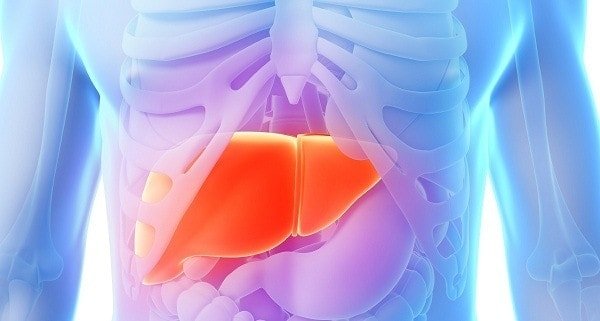Liver failure

Liver failure /CH/occurs when liver tissue loses its ability to regenerate or renew itself.
The condition is characterized by:
• Hepatic encephalopathy;
• Abnormal bleeding;
• Ascites;
• Jaundice;
Classification
• Fulminant liver failure develops when loss of regenerative capacity occurs within 8 weeks of the onset of the underlying disease.
• Subacute CN – occurs between the 8th and 26th week after the onset of the causative disease.
But initially the distinction may not be made because the primary disease may have existed for a long time but not been diagnosed.
What are the symptoms?
• Drowsiness, fatigue and possible confusion;
• Jaundice;
• Hyperdynamic circulation with multiple organ failure, which may resemble septic shock;
• Abdominal distension and identification of abdominal masses, possibly due to massive ascites or anazarka, which in turn are caused by fluid redistribution and hypoalbumenia.
• In a dehydrated patient, the signs of ascites are not so pronounced;
• Hepamegaly and splenomegaly, but not always;
• Edema in the brain with increased intracranial pressure, which can cause papilledema, hypertension and bradycardia; appearance of palmar erythema – redness of the palms, usually along the hypothenar eminence and of asterixis – involuntary movements of the palms from the wrist area, which strongly resemble the flapping of a bird’s wings;
• Hepatic encephalopathy – a set of neuropsychiatric disorders in patients with CNS, after the categorical exclusion of other brain diseases;
What are the causes?
Toxins
• Chronic alcohol abuse;
• Paracetamol poisoning – less likely to occur in alcoholics;
• Drug toxicity associated with the co-amoxiclav combination – amoxicillin and clavulanic acid, ciprofloxacin, doxycycline, erythromycin, isoniazid, nitrofurantoin, halothane, statins, cyclophosphamide, methotrexate, disulfiram, flutamide, gold and propylthiouracil, the list is not exhaustive .
• Poisoning by various substances, including poisonous mushrooms or chemicals containing carbon tetrachloride, phosphorus and other organic solvents;
• Herbal products, plants or plant products;
• Narcotic substances such as cocaine and ecstasy;
• Reye syndrome;
Infections
• Viral hepatitis;
• Adenovirus, Epstein-Barr virus, cytomegalovirus and viral hemorrhagic fevers;
Neoplastic processes
• Hepatocellular carcinoma or metastatic carcinoma;
Metabolic diseases
• Wilson’s disease;
• Others – alpha-1-trypsin deficiency, fructose intolerance, galactosemia and tyrosemia;
Related to pregnancy
• acute hepatic steatosis of pregnancy;
Diseases of blood vessels
• Budd-Chiari syndrome;
• Ischemia or veno-occlusive disease;
Other
• Autoimmune disease;
• Unknown cause -15%;
Treatment of Liver Failure
Prompt diagnosis and aggressive identification and management of factors provoking liver dysfunction.
• Sedative medications should be avoided;
• Limiting protein intake has not been found to help control the condition. Adequate nutrition is essential and limiting protein intake can cause or complicate malnutrition;
Drug therapy
Intestinal nitrogen load should be reduced using laxatives or colonic enemas.
However, this systematic review found that there is insufficient evidence to support or reject the use of nonabsorbable disaccharides in hepatic encephalopathy.
• Antibiotics – neomycin can be used to reduce the production of amino acids by reducing the concentration of ammonia-forming bacteria in the colon. Other antibiotics that can be used are metronidazole, vancomycin and the quinolones. Hepatic encephalopathy may be associated with the accumulation of substances that bind to receptors in the brain and suppress neuronal function. Flumazenil, a benzodiazepine antagonist, has been shown to have a significant beneficial effect on short-term hepatic encephalopathy in patients with cirrhosis, but no significant effect on recovery and survival.



